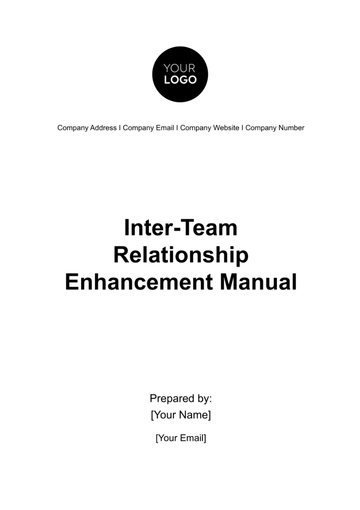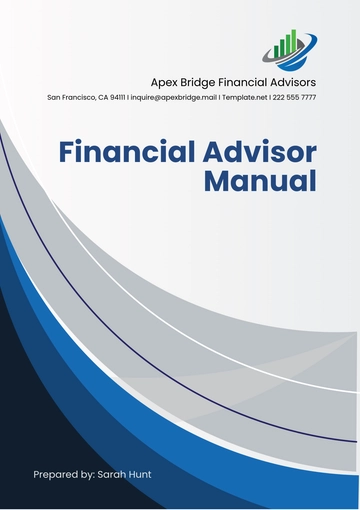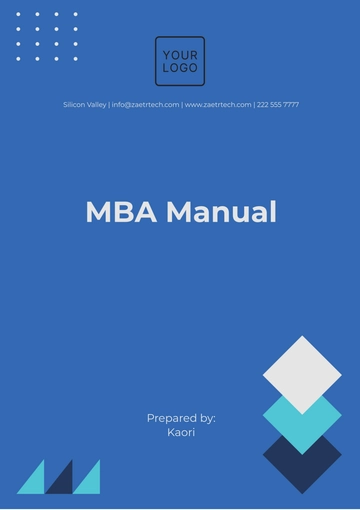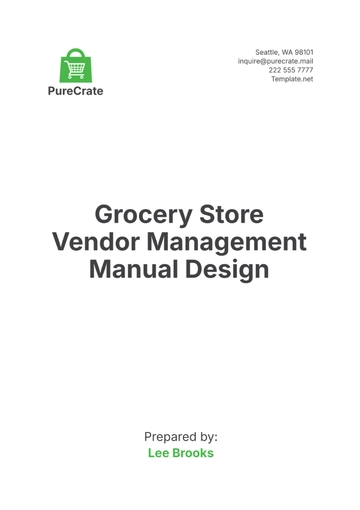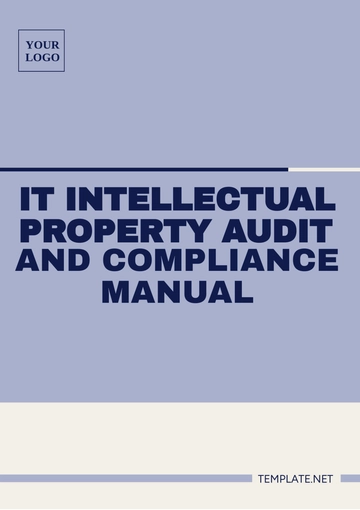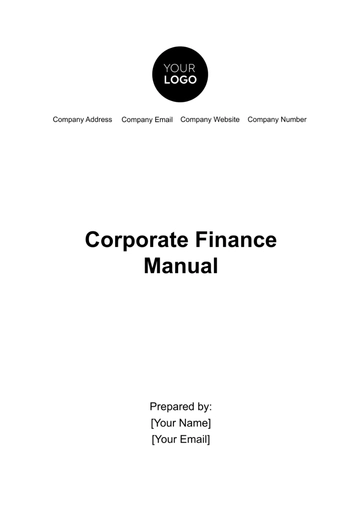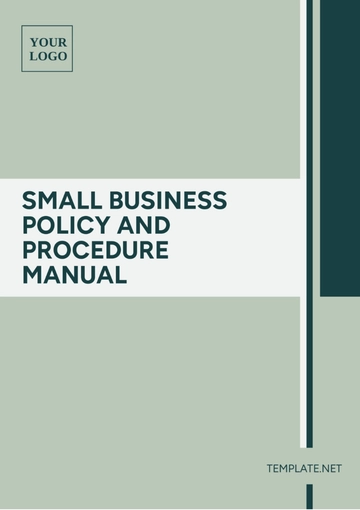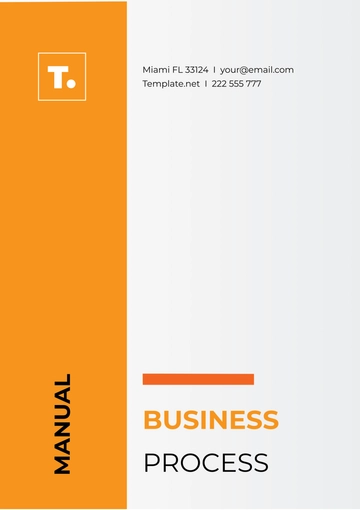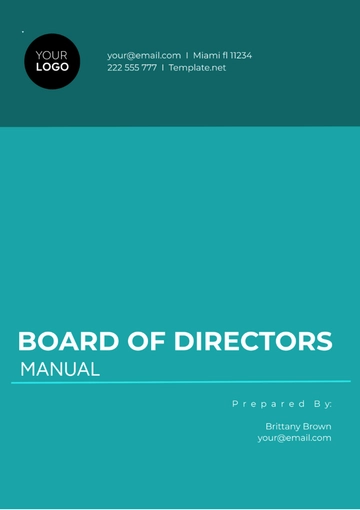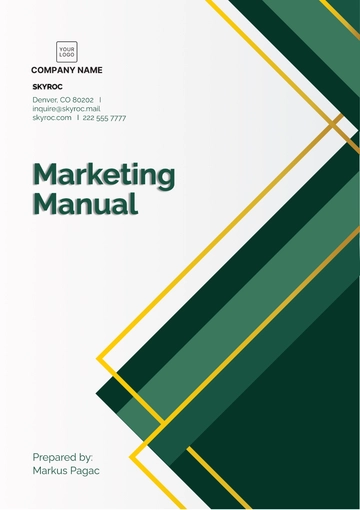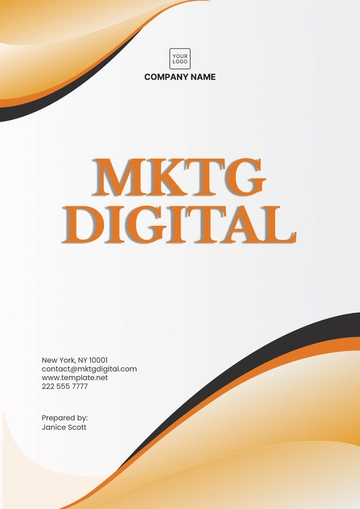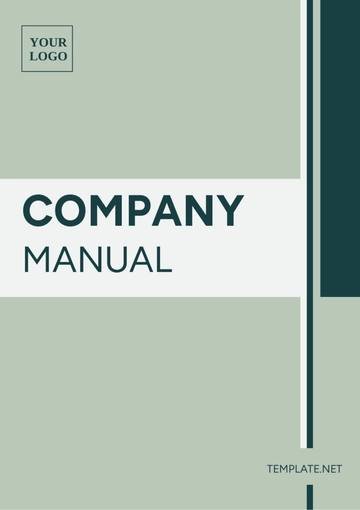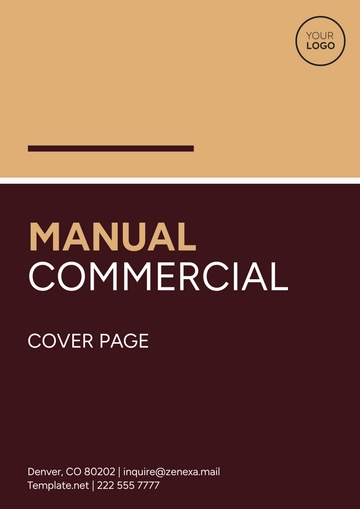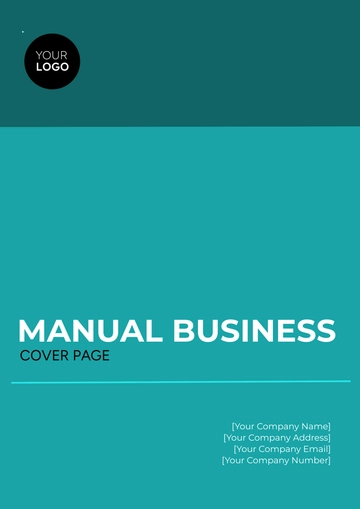Free Finance Credit Risk Management Manual
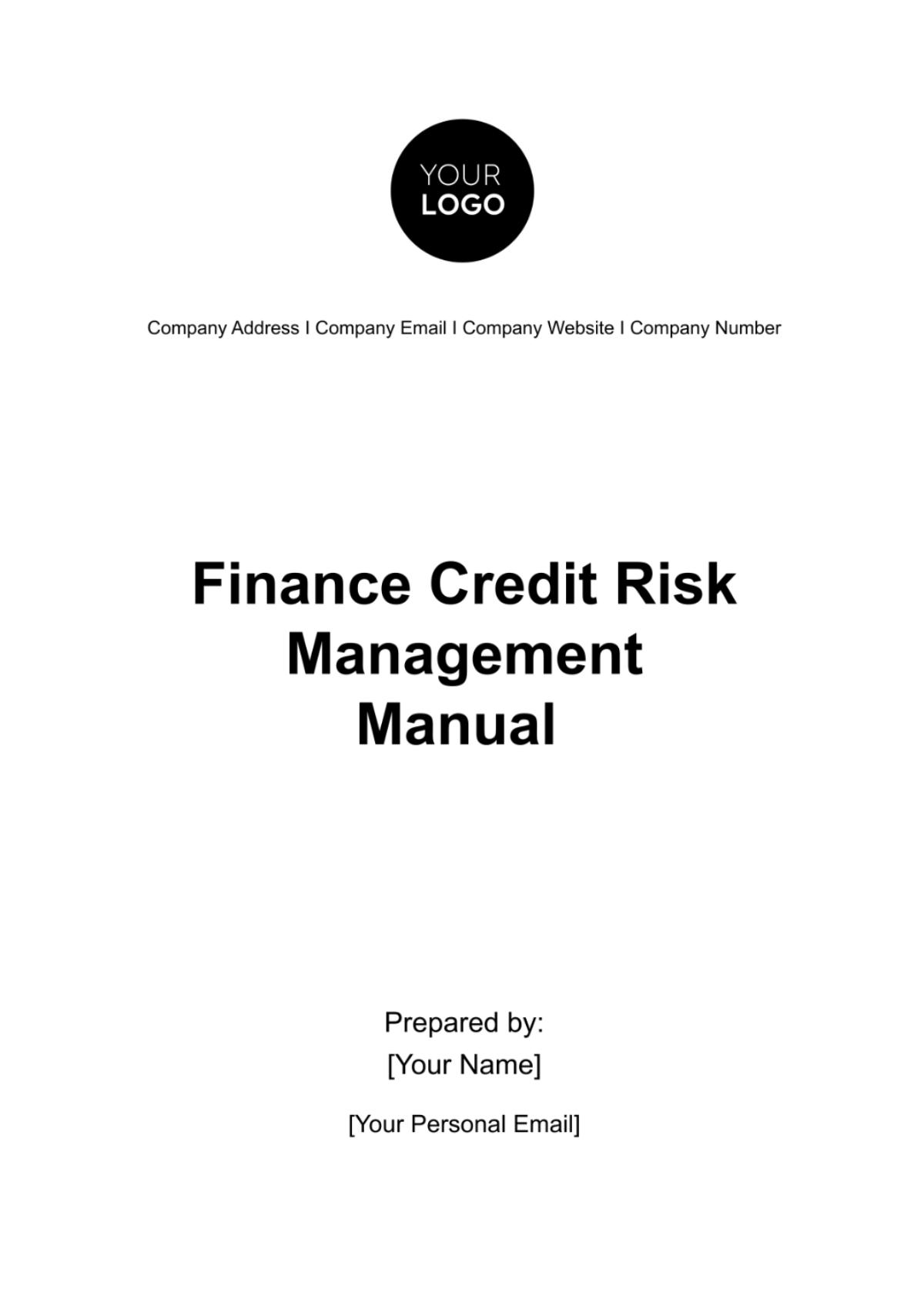
Introduction
Overview
The Credit Risk Management Manual serves as a comprehensive guide for managing the credit risk inherent in our company's financial operations. This document is crucial for maintaining financial stability and ensuring long-term profitability. It outlines the systematic approach to identifying, measuring, monitoring, and controlling the credit risk exposure faced by our company. By adhering to the principles and procedures detailed in this manual, we can minimize potential losses and enhance our decision-making processes.
Purpose and Scope
The primary objective of this manual is to establish a robust framework for managing credit risk that aligns with our company's strategic goals and risk appetite. It applies to all departments involved in credit activities, including but not limited to the finance, risk management, and credit departments. This manual covers various aspects of credit risk management, including assessment, approval, monitoring, and reporting, ensuring a consistent approach across the company.
Key Objectives
To provide a clear understanding of our approach to credit risk management.
To outline the responsibilities and procedures for managing credit risk.
To ensure compliance with regulatory requirements and industry best practices.
To foster a culture of risk awareness and informed decision-making within the company.
Credit Risk Policy
Policy Statement
Our Credit Risk Policy is grounded in a commitment to maintain the highest standards of financial integrity and risk management. We believe in a balanced approach to credit risk, seeking to optimize returns while minimizing potential losses. The policy sets the tone for how credit risk is viewed and managed within the company, defining our risk appetite and the measures to control and mitigate exposure.
Roles and Responsibilities
The successful management of credit risk requires a collaborative effort across various levels of the organization. The following table outlines the key roles and responsibilities in this process:
Role | Responsibilities |
Board of Directors | Approve and review the overall credit risk policy, set risk appetite, and oversee its implementation. |
Credit Risk Committee | Develop and recommend credit risk policies and procedures, monitor their effectiveness, and suggest improvements. |
Risk Management Team | Conduct risk assessments, monitor credit exposures, and report risk positions to the Credit Risk Committee. |
Finance Department | Ensure integration of credit risk management into the financial management framework. |
Credit Department | Assess creditworthiness of clients, manage credit portfolios, and ensure compliance with the credit policy. |
Internal Audit | Regularly review and audit the effectiveness of the credit risk management processes and policy adherence. |
Risk Appetite and Limits
Our company's risk appetite is defined by the level of risk we are willing to accept in pursuit of our financial objectives. This section outlines the quantitative and qualitative limits on credit exposure, including maximum exposure limits, sectoral limits, and concentration risk limits. These limits are reviewed periodically to align with our strategic goals and the external risk environment.
Compliance and Regulation
Adherence to regulatory requirements and internal policies is fundamental to our credit risk management. This section details the necessary legal and regulatory frameworks we must comply with, including local and international banking regulations, financial reporting standards, and anti-money laundering laws. Regular training and updates are provided to ensure all staff are aware of and comply with these requirements.
Credit Risk Assessment
Client Evaluation Criteria
In this crucial phase, we assess the creditworthiness of potential clients to mitigate the risk of default. Our evaluation is based on a comprehensive analysis of financial health, business stability, and market reputation. Key factors include:
Financial Analysis: Examining financial statements, cash flow, and profitability metrics.
Business Stability: Assessing the operational history, market position, and business model resilience.
Credit History: Reviewing credit scores, past loan performances, and payment history.
Credit Scoring Models
We utilize advanced credit scoring models that incorporate various data points to calculate a credit score for each potential client. This score helps in categorizing clients into different risk categories.
Table: Credit Evaluation Parameters
Parameter | Description | Weighting |
Credit History | Past credit behavior and repayments. | 30% |
Financial Health | Profitability, liquidity, leverage. | 40% |
Business Stability | Years in business, market share. | 20% |
Industry Risk | Risk profile of the industry sector. | 10% |
Credit Approval Process
Approval Authority Levels
Our credit approval process is structured to ensure that credit decisions are made at appropriate levels within the organization. The following table outlines the authority levels required for different credit exposure limits:
Credit Exposure Limit | Approval Authority |
Up to $100,000 | Credit Manager |
$100,001 - $500,000 | Senior Credit Manager |
Over $500,000 | Credit Risk Committee |
Documentation and Compliance
Every credit approval must be supported by thorough documentation, including financial statements, business plans, and risk assessments. Compliance checks are integral to this process, ensuring adherence to internal policies and regulatory standards.
Risk-Based Pricing
The pricing of credit products is based on the risk profile of the client. Higher risk clients may be subjected to higher interest rates and additional collateral requirements. This approach helps in balancing the risk-return ratio for the company.
Post-Approval Review
After a credit decision is made, a post-approval review is conducted to verify compliance with the approval criteria and to identify any deviations. This step is critical in ensuring the integrity of the credit decision process.
Credit Monitoring and Reporting
Regular Monitoring Procedures
Continuous monitoring of credit exposures is vital for early identification of potential credit risks and swift intervention. Our monitoring process includes:
Periodic Reviews: Regularly assessing the financial health and creditworthiness of clients.
Payment Performance: Tracking payment histories to identify late payments or defaults.
Covenant Compliance: Ensuring clients adhere to the terms and conditions of the credit agreement.
Reporting Framework
Effective reporting is crucial for maintaining visibility of credit risks across the organization. The following outlines our reporting structure:
Monthly Credit Reports: Detailed reports on credit exposures, risk ratings, and payment performances.
Quarterly Risk Analysis: Comprehensive analysis of the credit portfolio, highlighting any significant changes in risk profiles.
Annual Review Reports: A holistic review of the credit risk management process and its effectiveness.
Table: Key Risk Indicators (KRIs)
Our monitoring process is guided by several Key Risk Indicators, which help in early detection of potential credit risks:
Key Risk Indicator | Description |
Payment Delays | Frequency and extent of delayed payments. |
Credit Utilization | Percentage of credit limit used by clients. |
Financial Ratios | Key financial ratios like debt-to-equity. |
Industry Risk Changes | Shifts in the risk profile of industry sectors. |
Credit Score Changes | Changes in the credit scores of clients. |
Stress Testing
We conduct regular stress tests to assess the impact of adverse economic scenarios on our credit portfolio. These tests help in understanding potential vulnerabilities and in preparing appropriate mitigation strategies.
Credit Limit Utilization
Monitoring credit limit utilization is key to managing credit risk exposure. Clients approaching or exceeding their credit limits are flagged for further review.
Exception Reporting
Any deviations from the credit policy or unusual credit activities are reported through exception reports, ensuring timely attention and action by management.
Risk Mitigation Strategies
Diversification and Hedging
To mitigate the risks associated with credit exposure, our company employs a strategy of diversification and hedging. This approach includes:
Portfolio Diversification: Spreading credit exposures across various industries, sectors, and geographies to reduce concentration risk.
Hedging Strategies: Using financial instruments such as credit derivatives to hedge against potential credit losses.
Collateral Management
Effective collateral management is crucial in securing our credit exposures. Our approach includes:
Collateral Valuation: Regularly assessing the market value of collateral to ensure adequate coverage of credit exposures.
Collateral Types: Accepting various types of collateral, including real estate, financial securities, and guarantees.
Lien Management: Ensuring proper legal documentation and lien registration to secure the collateral.
Credit Insurance
We utilize credit insurance as a tool to transfer part of the credit risk to insurance companies. This insurance covers the risk of non-payment by borrowers, thereby providing an additional layer of security.
Table: Risk Mitigation Techniques
The following table summarizes key risk mitigation techniques and their applications:
Technique | Description | Application |
Diversification | Spreading exposure across various sectors. | Minimize concentration risk. |
Hedging | Using derivatives to mitigate risk. | Protect against market volatility. |
Collateralization | Obtaining assets as security for loans. | Secure loans and reduce default risk. |
Credit Insurance | Insuring against borrower default. | Transfer risk to third parties. |
Restructuring and Recovery
In cases of potential default, we actively pursue restructuring options to mitigate losses. This may involve renegotiating the terms of the credit agreement or taking more direct control of the underlying collateral.
Early Warning System
We have established an early warning system to identify signs of potential credit deterioration. This system includes monitoring financial indicators, market trends, and changes in borrower circumstances.
Regulatory Compliance
Compliance with Laws and Standards
Our company is committed to adhering to all applicable laws, regulations, and industry standards related to credit risk management. This commitment extends to:
Banking and Financial Regulations: Complying with national and international banking regulations, including Basel III guidelines.
Anti-Money Laundering (AML) and Know Your Customer (KYC) Standards: Implementing stringent AML and KYC procedures to prevent illegal activities.
Training and Awareness
Regular training programs are conducted to ensure all staff members are aware of compliance requirements. These programs cover:
Regulatory Updates: Keeping staff informed about changes in financial regulations and compliance standards.
Compliance Best Practices: Educating staff on best practices and ethical standards in credit risk management.
Audit and Compliance Monitoring
Continuous monitoring and regular internal audits are conducted to ensure compliance with regulatory requirements. This includes:
Regular Compliance Audits: Conducted by the internal audit team to assess adherence to regulatory standards.
Reporting Non-Compliance: Establishing a mechanism for reporting and addressing any instances of non-compliance.
Review and Audit
Periodic Review Process
The credit risk management framework is subject to periodic reviews to ensure its continued effectiveness and relevance. These reviews focus on:
Policy and Procedure Updates: Reviewing and updating policies and procedures to reflect changes in the market and regulatory environment.
Effectiveness Assessment: Assessing the effectiveness of the credit risk management strategies and practices.
Internal and External Audits
Audits play a crucial role in maintaining the integrity of our credit risk management processes:
Internal Audits: Conducted regularly to evaluate the effectiveness of risk management practices and compliance with internal policies.
External Audits: Independent audits performed by external auditors to provide an objective assessment of our risk management framework.
Continuous Improvement
Our approach to credit risk management is rooted in continuous improvement. Feedback from audits and reviews is used to enhance our policies and practices. This includes:
Implementing Recommendations: Acting on recommendations from internal and external audits.
Benchmarking: Comparing our practices with industry standards and best practices to identify areas for improvement.
Table: Audit and Review Schedule
The following table outlines the regular schedule for reviews and audits of our credit risk management framework:
Activity | Frequency | Description |
Policy Review | Annual | Review of credit risk management policies. |
Internal Audit | Bi-annual | Internal assessment of risk management practices. |
External Audit | Annual | Independent evaluation by external auditors. |
Regulatory Compliance Review | Quarterly | Review of adherence to regulatory requirements. |
- 100% Customizable, free editor
- Access 1 Million+ Templates, photo’s & graphics
- Download or share as a template
- Click and replace photos, graphics, text, backgrounds
- Resize, crop, AI write & more
- Access advanced editor
Minimize credit risks effectively with Template.net's Finance Credit Risk Management Manual Template. This editable, customizable manual offers comprehensive strategies for credit risk assessment and mitigation. Essential for risk managers in financial sectors, it encompasses policies, procedures, and tools for managing credit risk, safeguarding against potential financial losses.
